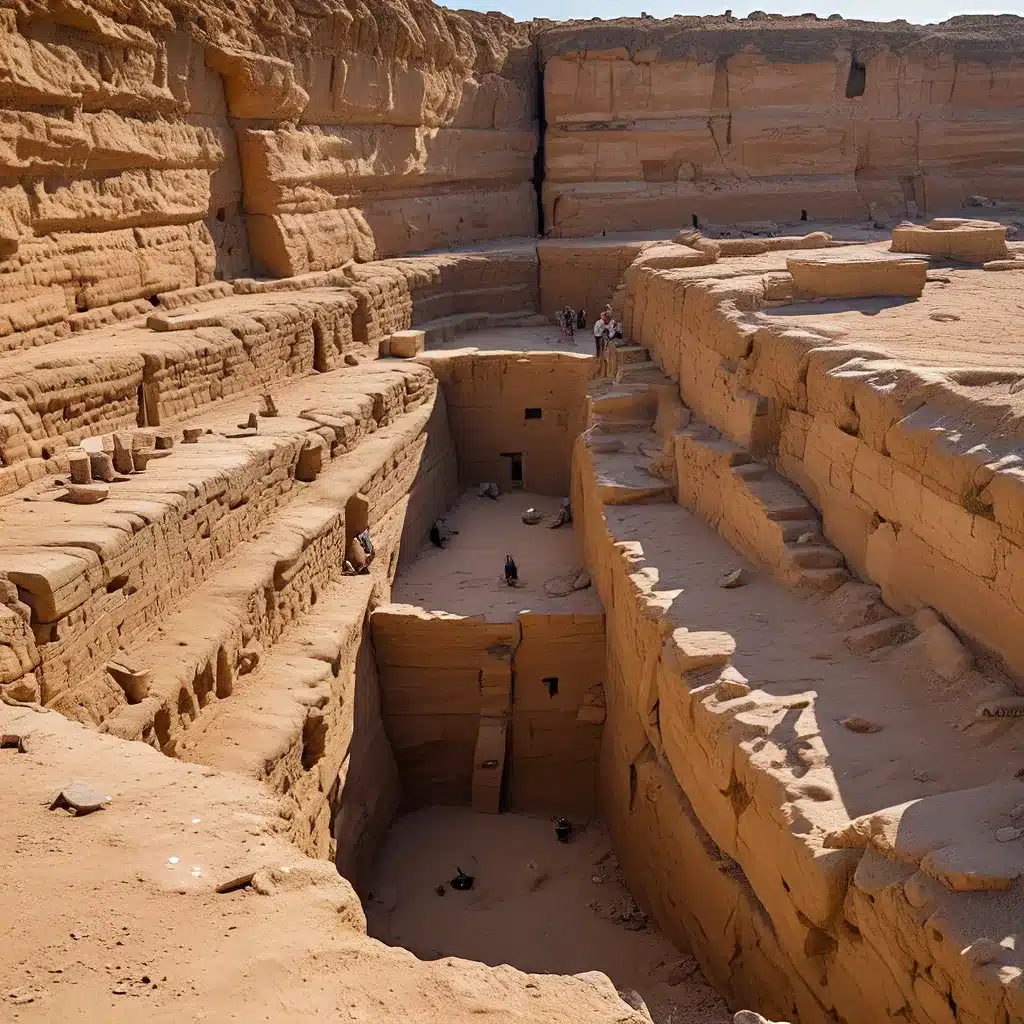
In the ever-evolving field of archaeology, the unexpected discovery has become a hallmark of the discipline. While meticulous planning and painstaking excavation are the cornerstones of successful archaeological endeavors, some of the most remarkable and significant findings have come about entirely by chance. These unexpected breakthroughs have not only expanded our understanding of the past but have also challenged long-held assumptions and sparked new avenues of research.
Serendipitous Finds: When Chance Favors the Prepared
One of the most renowned examples of an unexpected archaeological discovery is the unearthing of the Terra Cotta Warriors in China. In 1974, a group of farmers digging a well stumbled upon the first of thousands of life-sized, meticulously crafted terracotta figures, guarding the tomb of the first Qin emperor. This chance encounter led to the eventual excavation of an entire underground army, preserving a remarkable glimpse into the military might and cultural practices of ancient China.
Similarly, the Dead Sea Scrolls were discovered in 1947 by a Bedouin goat herder searching for a lost animal. The scrolls, containing some of the earliest known writings from the Bible, were found in a cave and have since provided invaluable insights into the religious and cultural practices of the ancient Near East.
Uncovering the Unexpected: Archaeological Serendipity in Action
The phenomenon of unexpected archaeological discoveries is not limited to ancient civilizations; it continues to captivate researchers and the public alike in the present day. In 2012, a team of archaeologists from the University of Leicester, in collaboration with the Richard III Society, made a remarkable finding: the remains of the Richard III, a medieval English king, were uncovered in a parking lot in Leicester. This unexpected discovery challenged the long-held belief that Richard III had been buried in Greyfriars Church, which had been destroyed during the reign of Henry VIII.
More recently, in 2018, a 4,000-year-old log coffin containing a well-preserved human body and a rare stone axe was discovered in a pond at a golf course in England. The size and elaboration of the coffin suggest that the individual buried within was of great significance within their community, providing a rare glimpse into the burial practices of the Bronze Age.
Unveiling the Past: Unexpected Discoveries and their Significance
These serendipitous finds are not merely curiosities; they hold immense significance for our understanding of the past. The Roman artifacts discovered under an abandoned medieval church near London, including rare stone statues and a glass jug, shed new light on the layered history of the site, revealing that it had once served as a Roman mausoleum and a Bronze Age burial ground before becoming the location of a Norman church.
Similarly, the hoard of Roman coins found along the Spanish coast, as well as the Crusader sword discovered off the coast of Israel, offer valuable insights into the trade, military, and cultural practices of these ancient civilizations. The exceptional preservation of these artifacts, often due to their unexpected and protected locations, allows researchers to study them in unprecedented detail.
Embracing the Unexpected: Lessons from Chance Discoveries
The prevalence of unexpected archaeological discoveries underscores the importance of maintaining an open and curious mindset in the pursuit of understanding the past. These chance encounters remind us that the most significant breakthroughs can arise from the most unexpected sources, challenging us to constantly reevaluate our assumptions and embrace the serendipitous nature of archaeological research.
Moreover, these discoveries highlight the importance of collaboration and interdisciplinary approaches in archaeology. The excavation of the Roman military barrack and domus in Rome, for example, was made possible through the coordination of archaeologists, government officials, and the builders of the new subway line.
Unlocking the Mysteries of the Past: Future Prospects for Unexpected Discoveries
As infrastructure projects, urban development, and climate change continue to impact the Earth’s surface, the potential for future unexpected archaeological discoveries remains high. The construction of the high-speed railway in the UK, for example, has been estimated to potentially uncover nearly 1,000 potential excavation sites, each with the possibility of yielding unexpected and significant findings.
The future of archaeology is rife with the promise of the unexpected, as researchers and enthusiasts alike continue to embrace the serendipitous nature of their field. By maintaining a spirit of curiosity and a willingness to challenge preconceptions, the archaeological community is poised to uncover even more remarkable insights into the rich tapestry of human history.
So, the next time you’re out for a stroll, keep your eyes peeled – you never know what unexpected treasure might be hiding underfoot, waiting to rewrite the past and shape our understanding of the world.


